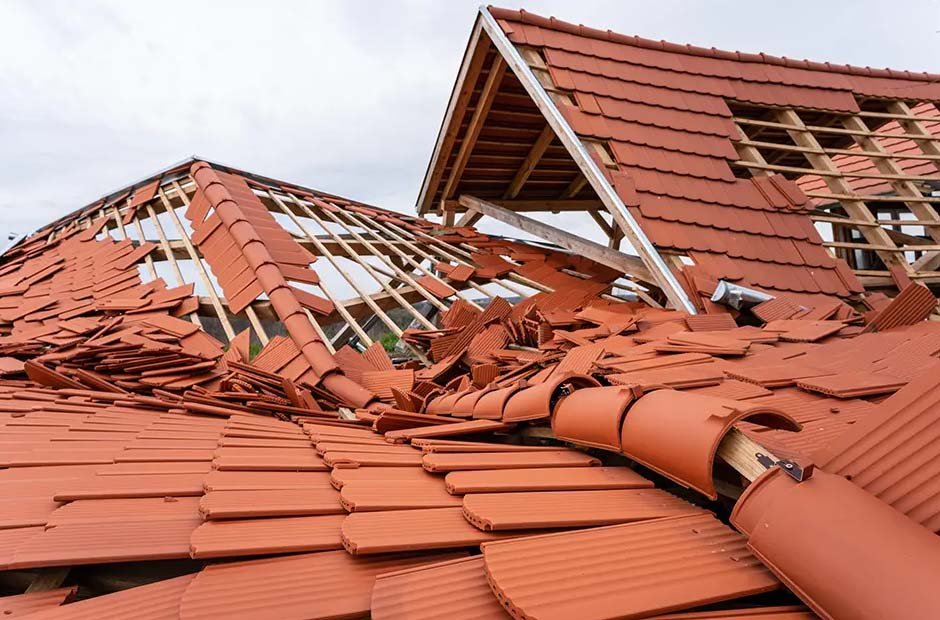Your roof is the first line of defense against the elements, protecting your home from wind, rain, snow, and extreme temperatures. However, severe weather can take a significant toll on your roof, leading to damage that can compromise its integrity and result in costly repairs. Preparing your roof for storms is crucial to ensure its durability and to safeguard your home. Partnering with a reputable roofing company such as Amstill Roofing – Round Rock, TX, can provide the expertise and services needed to keep your roof in top condition. We will explore the impact of weather on your roof and offer practical tips for preparing it to withstand severe storms.
Understanding Weather-Related Roof Damage
Weather-related damage to roofs can come in many forms, each presenting unique challenges. High winds can lift and tear away shingles, leaving the underlying structure exposed to the elements. Hailstorms can cause significant damage by denting or cracking shingles, leading to leaks and water infiltration. Heavy rain can exacerbate existing issues, causing leaks and water damage to the roof’s internal structure. Snow and ice accumulation can lead to ice dams, which prevent proper drainage and cause water to back up under the shingles. Understanding these potential impacts helps homeowners proactively protect their roofs from severe weather conditions.
Regular Roof Inspections
One of the most effective ways to prepare your roof for storms is to conduct regular inspections. Routine inspections help identify and address minor issues before they become major problems. Inspect your roof at least twice a year, preferably in the spring and fall and after significant weather events. Look for signs of damage, such as missing or cracked shingles, loose flashing, and clogged gutters. Pay special attention to areas around chimneys, skylights, and vents, as these are common points of vulnerability. By monitoring your roof’s condition, you can promptly address potential issues and maintain its integrity.
Strengthening Roof Components
Strengthening key components of your roof can significantly enhance its ability to withstand severe weather. Ensure that your roof’s flashing is secure and in good condition, critical in preventing water infiltration. Reinforce the edges of your roof with metal drip edges to prevent wind damage. If your roof has an attic, ensure it is properly ventilated and insulated to prevent ice dams in snowy conditions. Additionally, consider installing hurricane straps or clips if you live in an area prone to high winds. These devices help secure the roof to the home’s structure, reducing the risk of wind uplift and damage.
Maintaining Gutters and Downspouts
Properly functioning gutters and downspouts protect your roof from water damage during storms. Clogged gutters can cause water to back up and overflow, damaging the roof, siding, and foundation. Clean your gutters regularly to remove leaves, debris, and any obstructions that may impede water flow. Ensure that downspouts direct water away from your home’s foundation. Consider installing gutter guards to minimize debris buildup and reduce maintenance needs. Keeping your gutters and downspouts clear helps ensure that rainwater is effectively channeled away from your roof and home.
Trimming Overhanging Branches
Overhanging branches can pose a significant risk to your roof during storms. High winds can cause branches to break and fall, potentially damaging shingles and other roof components. Additionally, branches that scrape against the roof can wear down shingles and create entry points for water. To minimize this risk, trim any tree branches that overhang your roof. Maintain a safe distance between trees and your home, ideally at least six to ten feet, depending on the tree’s size and growth pattern. Regular tree maintenance not only protects your roof but also enhances the safety and aesthetics of your property.
Emergency Preparedness and Response
Despite your preparation efforts, severe weather can still cause unexpected damage to your roof. An emergency preparedness plan ensures that you can respond quickly and effectively to any issues. Keep a list of local roofing contractors and emergency contact numbers readily available. Familiarize yourself with your insurance policy and understand the coverage for storm-related damage. In the event of a storm, thoroughly inspect your roof as soon as it is safe. Document any damage with photographs and contact your insurance provider to initiate the claims process. Quick action can help mitigate further damage and expedite repairs.
Choosing Storm-Resistant Roofing Materials
Investing in storm-resistant roofing materials can provide long-term protection for your home. Consider upgrading to impact-resistant shingles that can withstand hail and debris. Metal roofing is another durable option, offering resistance to high winds and fire. Synthetic slate or rubber shingles can provide additional durability and flexibility for areas prone to heavy snowfall. Discuss with a roofing professional to determine the best materials for your climate and specific needs. While storm-resistant materials may come with a higher initial cost, they can save you money in the long run by reducing the need for frequent repairs and replacements.
Conclusion
Preparing your roof for storms is essential for protecting your home from weather-related damage. By understanding the impact of severe weather on your roof and taking proactive measures such as regular inspections, strengthening roof components, maintaining gutters, trimming overhanging branches, and choosing storm-resistant materials, you can enhance your roof’s durability and resilience. Additionally, having an emergency preparedness plan ensures you can respond quickly to any damage. By taking these steps, homeowners can safeguard their roofs and homes, ensuring peace of mind and security in severe weather conditions.
















